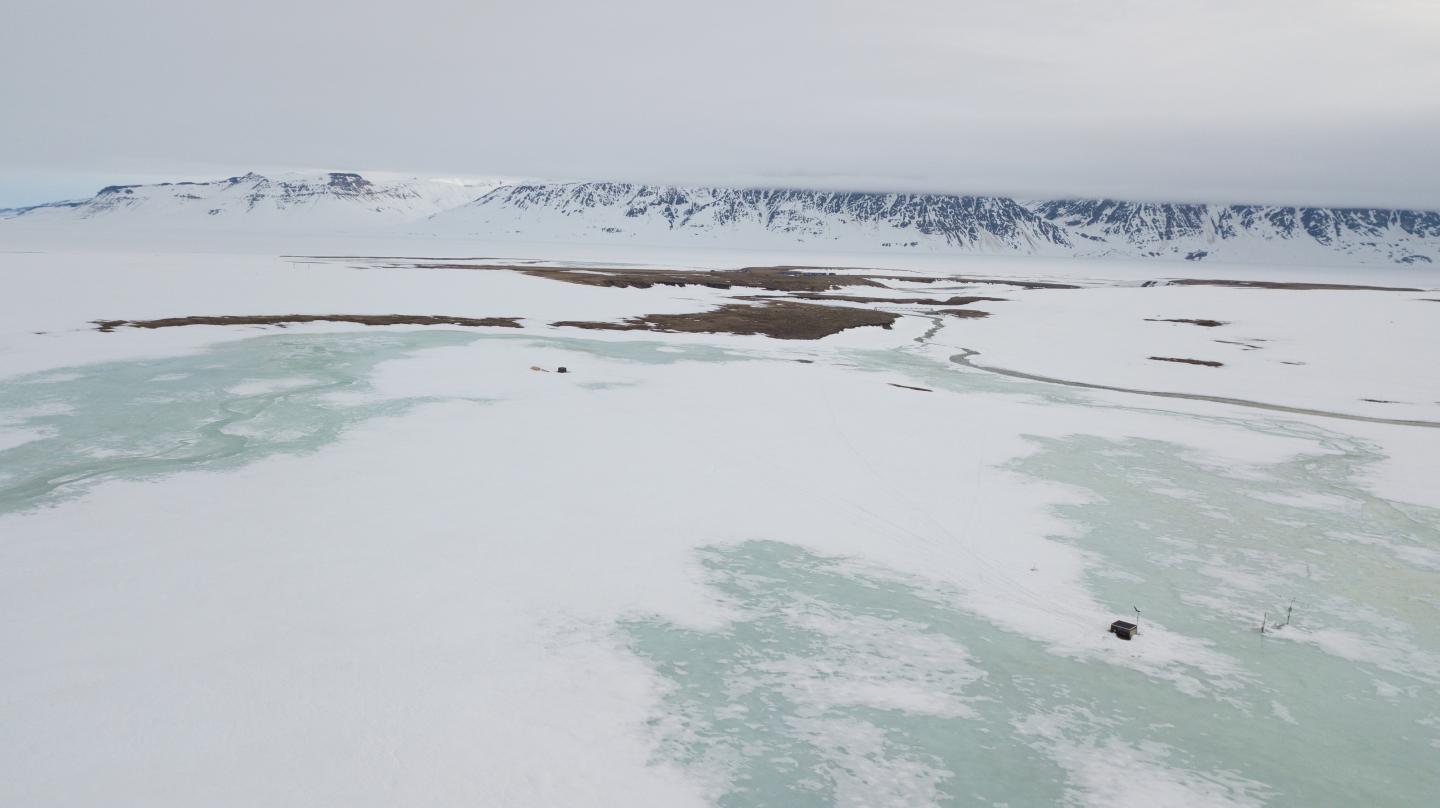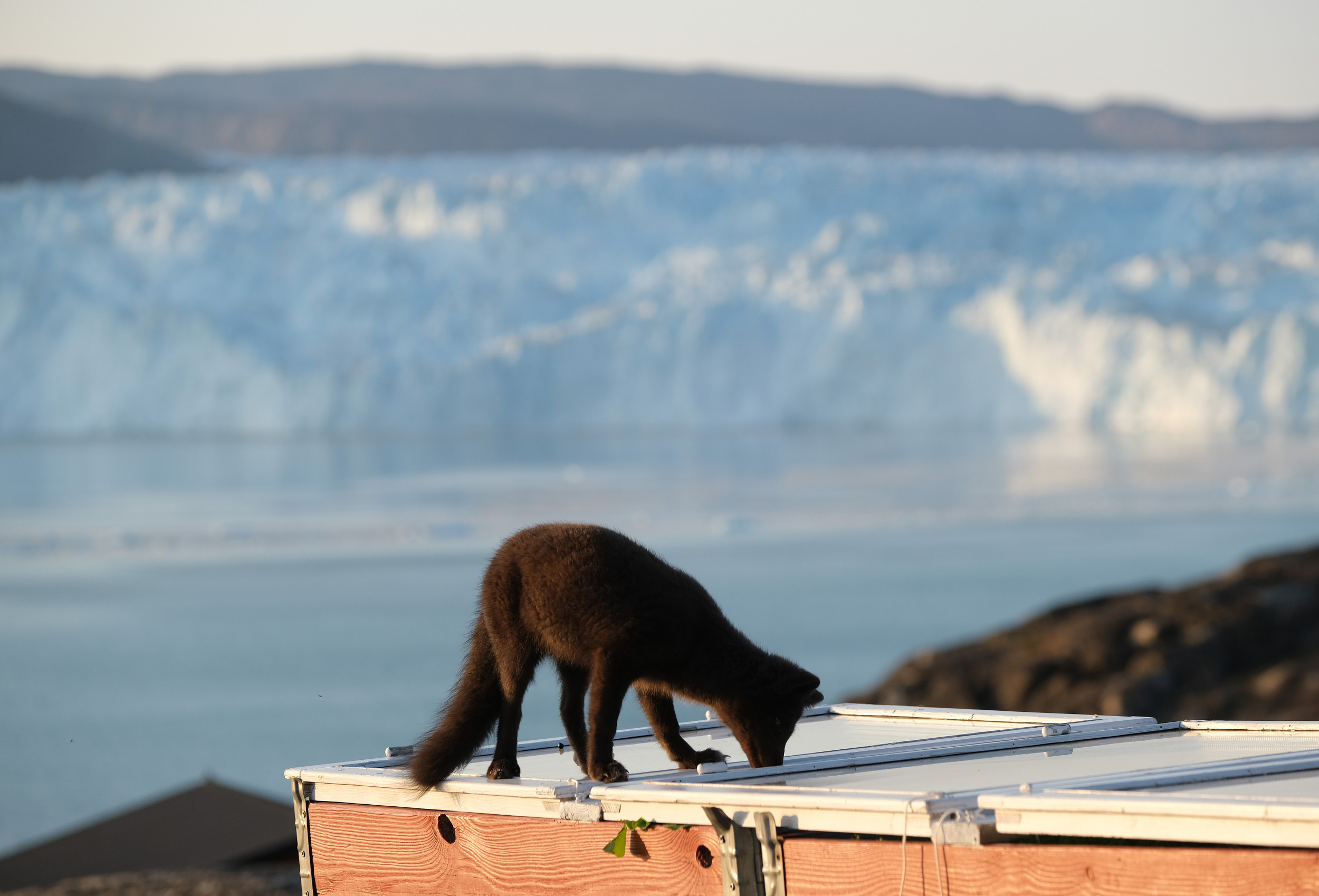去年冬天,北极的极端降雪摧毁了格陵兰东北部扎克伯格的野生动物——导致整个食物链的“完全繁殖失败”。这是根据最近发表在公共科学图书馆生物学。
研究作者说,尽管过去已知低繁殖率会影响单个物种,但这是在生态系统的每个阶段首次出现如此低的繁殖率。

2018年夏天,格陵兰东北部的扎克伯格山谷——6月下旬,大雪仍覆盖着大地,积雪季节通常即将结束。
和世界其他地方一样,除了一个更独特的挑战——积雪消退之外,北极正在经历由人类造成的气候变化导致的长期变暖。事实上,由美国国家海洋和大气管理局表明地球变暖的速度是地球其他地方的两倍。正如参与研究的研究人员指出的,气候变化的风险和极端事件发生的可能性也在增加。
扎克伯格周围当地生态系统的每一个组成部分都被监测了20多年。这使得研究人员能够跟踪任何变化或异常事件,并监测极地气候变化的影响。
丹麦奥尔胡斯大学的生物学家尼尔森·马丁·施密特在一份报告中说:“我们的研究表明,气候变化不仅仅是‘变暖’,生态系统可能会受到目前仍然罕见但极端的事件的严重打击。”声明。
“它还带来了北极长期观测无与伦比的价值。只有密切关注整个北极生态系统,我们才能理解气候变化带来的浩劫。”
2018年,北极大片地区被异常大量的雪覆盖。在扎克伯格,这意味着积雪融化被“异常”延迟——当植物生长和动物繁殖率传统上在7月达到高峰时,大约45%的区域仍然被覆盖。
这导致了晚熟开花。尽管,正如研究作者提到的,当开花最终开始时,植物和昆虫的数量确实恢复到了正常水平。较大的动物适应性较差。
晚筑巢导致滨鸟卵减少。这个季节晚些时候孵化出来的小企鹅数量很少,这意味着它们在羽翼未丰之前不太可能有时间和资源来完成它。至于哺乳动物,研究人员没有看到任何北极狐幼仔或麝牛幼仔。

北极狐是受格陵兰东北部扎克伯格繁殖失败影响的物种之一。图中:东格陵兰岛Eqip Sermia冰川,一只小狗在小屋的盒装花园里嗅着。
正如研究作者强调的,生殖失败本身并不少见。仅举一例,1992年火山爆发导致滨鸟种群繁殖失败。但是2018年整个生态系统的生殖失败程度是不寻常的。
即便如此,像这样的一次性事件也不是太令人担心的事情,作者们也小心翼翼,不要过度解读有限区域内的单一观察结果。然而,他们担心不断变化的气候和未知的临界点可能会产生更多像2018年这样的反常事件,这对生活在该地区的物种来说可能是一个主要问题。随着北极海冰的耗尽,雪的可变性可能会增加。
施密特说:“一个非繁殖年对北极高纬度物种来说没那么糟糕。”。“令人担忧的前景是,2018年可能会给未来带来一丝曙光,在未来,气候变化的加剧可能会将北极物种推向——甚至可能超越——它们的极限。”
这项研究的作者总结道:“在北极的生态系统中,许多受到雪况和水资源的限制,降水的变化可能和temperature—if的变化一样重要,甚至更重要。”
LAST YEAR'S EXTREME SNOWFALL CAUSED 'COMPLETE REPRODUCTIVE FAILURE' IN ARCTIC ECOSYSTEM
Extreme snowfall in the Arctic devastated wildlife in Zackenberg, Northeast Greenland, last winter—causing a "complete reproductive failure" across the food web. That is according to a study recently published in PLOS Biology.
Although poor reproduction rates have been known to affect individual species in the past, this is the first time such low reproductive rates have been seen at every stage of the ecosystem, the study authors say.

The Zackenberg valley in Northeast Greenland, summer 2018 - huge amounts of snow still covered the ground in late June, where the snow-covered season usually is coming to an end.
As is the rest of the world, the Arctic is experiencing long-term warming driven by human-caused climate change, in addition to a more unique challenge—retreating snow-cover. In fact, data published by the U.S. National Oceanic and Atmospheric Administration (NOAA) suggests it is warming at twice the speed as the rest of the planet. As the researchers involved in the study point out, the risk of climate variability and the likelihood of extreme events taking place is also increasing.
Every component of the local ecosystems around Zackenberg have been monitored for over 20 years. This enables researchers to track any changes or anomalous events and monitor the effects of climate change in this polar region.
"Our study shows that climate change is more than 'just' warming, and that ecosystems may be hard hit by currently still rare but extreme events," lead author Niels Martin Schmidt, a biologist at Aarhus University in Denmark, said in a statement.
"What it also brings out is the unparalleled value of long-term observations of the Arctic. Only by keeping an eye on full arctic ecosystems can we understand the havoc brought by the changing climate."
In 2018, large swathes of the Arctic were blanketed in exceptionally large quantities of snow. In Zackenberg, it meant that snow melt was "extraordinarily" delayed—when plant growth and animal reproduction rates traditionally peak in July, approximately 45 percent of the area was still covered.
This resulted in late-season flowering. Although, as the study authors do mention, plant and insect abundance did return to normal levels when flowering eventually kicked in. Larger animals were less adaptable.
Late nest initiation resulted in fewer shorebird eggs. The small number that hatched did so later in the season, which meant that they were less likely to have the time and resources to make it until fledgling. As for the mammals, the researchers did not see any Arctic fox cubs or muskox calves.

The Arctic fox was one of the species affected by the reproductive failure at Zackenberg, Northeast Greenland. Pictured here: a pup sniffs at a boxed garden at a lodge as the Eqip Sermia glacier, east Greenland.
As the study authors stress, reproductive failure in itself is not uncommon. A volcanic eruption caused reproductive failure in the shorebird population in 1992, for just one example. But the extent of reproductive failure in 2018 across the entire ecosystem is unusual.
Even then, a one-off event like this is not something to be too concerned about and the authors are careful not to overinterpret a single observation in a limited area. However, they are worried that changing climates and unknown tipping points could produce more freak events like 2018, which could be a major problem for species living in the area. As sea ice in the Arctic depletes, snow variability could increase.
"One non-breeding year is hardly that bad for high-arctic species," said Schmidt. "The worrying perspective is that 2018 may offer a peep into the future, where increased climatic variability may push the arctic species to—and potentially beyond—their limits."
The study authors conclude: "Of arctic ecosystems, many are limited by snow conditions and water availability, and changes in precipitation may prove as crucial as changes in temperature—if not even more."






